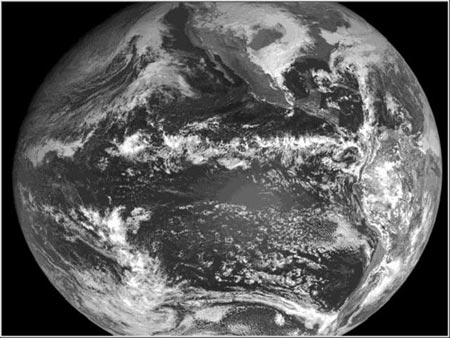Intertropical Convergence Zone (ITCZ) - (n.)
A zone close to the equator (usually somewhat north to it, on the "heat equator") where the trade-winds converge and air rises high into the upper reaches of the "troposphere." In the Hadley Cell, the ITCZ is the portion that supplies the upward motion in the cell. The strong updraft in the ITCZ raises the tropopause, the upper boundary of the troposphere, to about 15 km height. In the ITCZ, cumulus convective systems can grow to enormous size. Their central cores are protected from dilution by the large diameter of the systems: the heat released by condensation is trapped within. These giant cumulus systems or hot towers are commonly 35,000 feet tall, and some may be as high as 50,000 feet. At any moment there are several thousand of them active. Each one releases an amount of latent heat energy into the atmosphere equivalent to a hydrogen bomb explosion during a life-time of an hour or so and they make the ITCZ a zone of persistent rainfall and cloudiness readily identifiable on satellite photographs, as below. Note the “line” of clouds located near the equator, indicated the ITCZ.
It is this process of latent heat release that warms the air of the ITCZ rather than direct heating by the sun as Hadley had supposed. Because of the rising air, rain is common and cloudiness (never complete, but broken up by blue sky) is the hallmark of this convection. Within the upper troposphere, winds have a component toward the pole, compensating the flow of the trade-winds. The ITCZ is not usually precisely centered on the equator, but moves north and south, but most of the time it resides north of the equator because the northern hemisphere is warmer than the southern hemisphere (a result of the large ice sheet on Antarctica and the circumpolar air and ocean currents). See also “General Circulation of the Atmosphere.”

